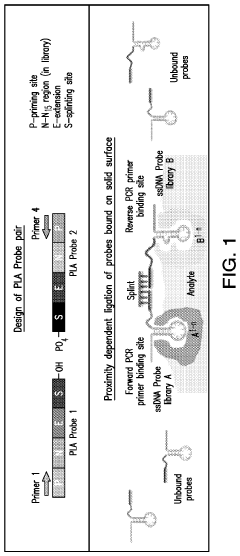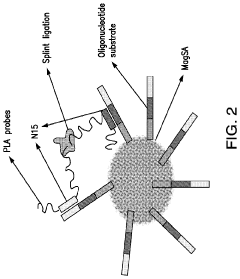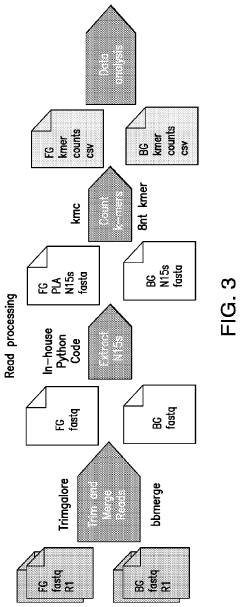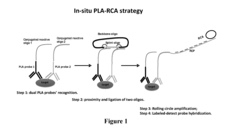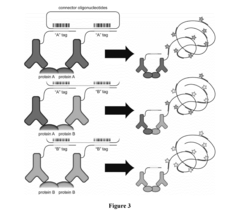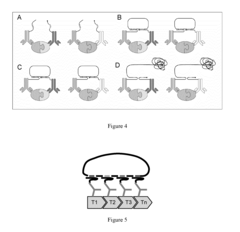How to Recognize Emerging Trends in PLA Technology?
JUN 25, 20259 MIN READ
Generate Your Research Report Instantly with AI Agent
Patsnap Eureka helps you evaluate technical feasibility & market potential.
PLA Technology Evolution and Objectives
The evolution of People's Liberation Army (PLA) technology has been marked by significant advancements and strategic shifts over the past few decades. Initially focused on modernizing its conventional forces, the PLA has gradually transitioned towards developing and integrating cutting-edge technologies to enhance its military capabilities. This evolution has been driven by China's broader national security objectives and its ambition to become a world-class military power.
In the early stages, the PLA's technological development primarily centered on improving existing weapon systems and platforms. However, as China's economic and technological prowess grew, so did its military aspirations. The PLA began to invest heavily in research and development, aiming to close the gap with advanced Western militaries. This shift in focus led to the emergence of key technological areas such as aerospace, cyber warfare, artificial intelligence, and advanced materials.
One of the primary objectives of PLA technology evolution has been to achieve information dominance on the battlefield. This goal has driven investments in advanced command, control, communications, computers, intelligence, surveillance, and reconnaissance (C4ISR) systems. The PLA has also prioritized the development of precision-guided munitions, stealth technology, and unmanned systems to enhance its operational capabilities across various domains.
Another crucial objective has been the pursuit of asymmetric advantages. Recognizing the challenges of competing directly with more established military powers, the PLA has focused on developing technologies that can potentially neutralize or offset the advantages of potential adversaries. This includes advancements in anti-access/area denial (A2/AD) capabilities, hypersonic weapons, and electronic warfare systems.
The PLA's technological evolution has also been characterized by a strong emphasis on civil-military fusion. This approach aims to leverage civilian technological advancements for military purposes, blurring the lines between commercial and military research and development. As a result, emerging technologies from China's burgeoning tech sector are increasingly finding applications in military contexts.
Looking ahead, the PLA's technological objectives are likely to focus on further integration of artificial intelligence and autonomous systems into military operations. This includes the development of intelligent unmanned platforms, AI-assisted decision-making systems, and advanced robotics. Additionally, the PLA is expected to continue its efforts in quantum technology, directed energy weapons, and advanced materials to maintain a competitive edge in future conflicts.
In the early stages, the PLA's technological development primarily centered on improving existing weapon systems and platforms. However, as China's economic and technological prowess grew, so did its military aspirations. The PLA began to invest heavily in research and development, aiming to close the gap with advanced Western militaries. This shift in focus led to the emergence of key technological areas such as aerospace, cyber warfare, artificial intelligence, and advanced materials.
One of the primary objectives of PLA technology evolution has been to achieve information dominance on the battlefield. This goal has driven investments in advanced command, control, communications, computers, intelligence, surveillance, and reconnaissance (C4ISR) systems. The PLA has also prioritized the development of precision-guided munitions, stealth technology, and unmanned systems to enhance its operational capabilities across various domains.
Another crucial objective has been the pursuit of asymmetric advantages. Recognizing the challenges of competing directly with more established military powers, the PLA has focused on developing technologies that can potentially neutralize or offset the advantages of potential adversaries. This includes advancements in anti-access/area denial (A2/AD) capabilities, hypersonic weapons, and electronic warfare systems.
The PLA's technological evolution has also been characterized by a strong emphasis on civil-military fusion. This approach aims to leverage civilian technological advancements for military purposes, blurring the lines between commercial and military research and development. As a result, emerging technologies from China's burgeoning tech sector are increasingly finding applications in military contexts.
Looking ahead, the PLA's technological objectives are likely to focus on further integration of artificial intelligence and autonomous systems into military operations. This includes the development of intelligent unmanned platforms, AI-assisted decision-making systems, and advanced robotics. Additionally, the PLA is expected to continue its efforts in quantum technology, directed energy weapons, and advanced materials to maintain a competitive edge in future conflicts.
Market Analysis for PLA Applications
The market for Polylactic Acid (PLA) applications has been experiencing significant growth in recent years, driven by increasing environmental concerns and the shift towards sustainable materials. PLA, a biodegradable and biocompatible polymer derived from renewable resources, has found applications across various industries, including packaging, textiles, and medical devices.
In the packaging sector, PLA has gained traction as an eco-friendly alternative to traditional petroleum-based plastics. The global market for PLA packaging is expanding rapidly, with a particular focus on food packaging, disposable cutlery, and beverage bottles. This growth is fueled by consumer demand for sustainable products and stringent regulations on single-use plastics in many countries.
The textile industry has also embraced PLA as a sustainable fiber option. PLA-based fabrics are being used in apparel, home textiles, and non-woven applications. The market for PLA in textiles is expected to grow as more fashion brands commit to using sustainable materials in their products.
In the medical field, PLA has found applications in implants, drug delivery systems, and tissue engineering scaffolds. The biocompatibility and biodegradability of PLA make it an attractive material for these applications. The medical PLA market is projected to expand as research and development in this area continue to advance.
The automotive industry is another emerging market for PLA applications. As automakers strive to reduce vehicle weight and improve fuel efficiency, PLA-based composites are being explored for interior components and non-structural parts. This trend is likely to continue as sustainability becomes a key focus in the automotive sector.
3D printing is a rapidly growing application area for PLA. The material's ease of use, low warping, and biodegradability have made it a popular choice for hobbyists and professionals alike. The market for PLA filaments in 3D printing is expected to grow as the technology becomes more widespread in prototyping and small-scale manufacturing.
Despite the positive market outlook, challenges remain for PLA adoption. The material's higher cost compared to conventional plastics and limitations in certain performance characteristics, such as heat resistance, can hinder its widespread use in some applications. However, ongoing research and development efforts are addressing these issues, potentially expanding PLA's market potential.
Geographically, North America and Europe currently lead the PLA market, driven by strong environmental regulations and consumer awareness. However, the Asia-Pacific region is expected to show the highest growth rate in the coming years, fueled by increasing industrialization and a growing focus on sustainable development in countries like China and India.
In the packaging sector, PLA has gained traction as an eco-friendly alternative to traditional petroleum-based plastics. The global market for PLA packaging is expanding rapidly, with a particular focus on food packaging, disposable cutlery, and beverage bottles. This growth is fueled by consumer demand for sustainable products and stringent regulations on single-use plastics in many countries.
The textile industry has also embraced PLA as a sustainable fiber option. PLA-based fabrics are being used in apparel, home textiles, and non-woven applications. The market for PLA in textiles is expected to grow as more fashion brands commit to using sustainable materials in their products.
In the medical field, PLA has found applications in implants, drug delivery systems, and tissue engineering scaffolds. The biocompatibility and biodegradability of PLA make it an attractive material for these applications. The medical PLA market is projected to expand as research and development in this area continue to advance.
The automotive industry is another emerging market for PLA applications. As automakers strive to reduce vehicle weight and improve fuel efficiency, PLA-based composites are being explored for interior components and non-structural parts. This trend is likely to continue as sustainability becomes a key focus in the automotive sector.
3D printing is a rapidly growing application area for PLA. The material's ease of use, low warping, and biodegradability have made it a popular choice for hobbyists and professionals alike. The market for PLA filaments in 3D printing is expected to grow as the technology becomes more widespread in prototyping and small-scale manufacturing.
Despite the positive market outlook, challenges remain for PLA adoption. The material's higher cost compared to conventional plastics and limitations in certain performance characteristics, such as heat resistance, can hinder its widespread use in some applications. However, ongoing research and development efforts are addressing these issues, potentially expanding PLA's market potential.
Geographically, North America and Europe currently lead the PLA market, driven by strong environmental regulations and consumer awareness. However, the Asia-Pacific region is expected to show the highest growth rate in the coming years, fueled by increasing industrialization and a growing focus on sustainable development in countries like China and India.
Current PLA Tech Landscape and Challenges
The current landscape of PLA (People's Liberation Army) technology is characterized by rapid advancements and a strategic focus on modernization. China's military has been investing heavily in cutting-edge technologies to enhance its capabilities across various domains, including land, sea, air, space, and cyberspace.
One of the primary challenges in recognizing emerging trends in PLA technology is the opaque nature of China's military development programs. The PLA often maintains a high level of secrecy around its technological advancements, making it difficult for external observers to accurately assess the full extent of its capabilities.
In recent years, the PLA has made significant strides in areas such as artificial intelligence, quantum computing, hypersonic weapons, and autonomous systems. These technologies have the potential to revolutionize military operations and alter the balance of power in the region. However, the exact state of development and deployment of these technologies remains uncertain.
Another challenge lies in distinguishing between genuine technological breakthroughs and strategic messaging. The PLA often showcases new weapons systems and technologies during military parades and exercises, but the operational readiness and effectiveness of these systems are not always clear.
The PLA's focus on civil-military fusion presents an additional layer of complexity. This strategy aims to integrate civilian research and development with military applications, blurring the lines between commercial and military technologies. This approach makes it challenging to track the flow of technological innovations from the civilian sector into military applications.
Geographically, PLA technology development is distributed across various research institutions, universities, and military-industrial complexes throughout China. Key centers of innovation include Beijing, Shanghai, and Shenzhen, but significant research and development activities occur in other regions as well.
The PLA's technological advancements are not occurring in isolation. There is a global race for military technological superiority, with countries like the United States, Russia, and others also pushing the boundaries of military technology. This competitive landscape adds to the challenge of accurately assessing the PLA's relative technological position.
Recognizing emerging trends in PLA technology requires a multifaceted approach, combining open-source intelligence, satellite imagery analysis, and expert assessments. International cooperation and information sharing among allies and partners can also play a crucial role in developing a more comprehensive understanding of the PLA's technological trajectory.
One of the primary challenges in recognizing emerging trends in PLA technology is the opaque nature of China's military development programs. The PLA often maintains a high level of secrecy around its technological advancements, making it difficult for external observers to accurately assess the full extent of its capabilities.
In recent years, the PLA has made significant strides in areas such as artificial intelligence, quantum computing, hypersonic weapons, and autonomous systems. These technologies have the potential to revolutionize military operations and alter the balance of power in the region. However, the exact state of development and deployment of these technologies remains uncertain.
Another challenge lies in distinguishing between genuine technological breakthroughs and strategic messaging. The PLA often showcases new weapons systems and technologies during military parades and exercises, but the operational readiness and effectiveness of these systems are not always clear.
The PLA's focus on civil-military fusion presents an additional layer of complexity. This strategy aims to integrate civilian research and development with military applications, blurring the lines between commercial and military technologies. This approach makes it challenging to track the flow of technological innovations from the civilian sector into military applications.
Geographically, PLA technology development is distributed across various research institutions, universities, and military-industrial complexes throughout China. Key centers of innovation include Beijing, Shanghai, and Shenzhen, but significant research and development activities occur in other regions as well.
The PLA's technological advancements are not occurring in isolation. There is a global race for military technological superiority, with countries like the United States, Russia, and others also pushing the boundaries of military technology. This competitive landscape adds to the challenge of accurately assessing the PLA's relative technological position.
Recognizing emerging trends in PLA technology requires a multifaceted approach, combining open-source intelligence, satellite imagery analysis, and expert assessments. International cooperation and information sharing among allies and partners can also play a crucial role in developing a more comprehensive understanding of the PLA's technological trajectory.
Current PLA Trend Recognition Methods
01 PLA synthesis and production methods
Various techniques for synthesizing and producing polylactic acid (PLA), including improvements in polymerization processes, catalyst systems, and purification methods. These advancements aim to enhance the efficiency and quality of PLA production, making it more suitable for a wide range of applications.- PLA synthesis and production methods: Various techniques for synthesizing and producing polylactic acid (PLA), including improvements in polymerization processes, catalyst systems, and purification methods. These advancements aim to enhance the efficiency and quality of PLA production, making it more suitable for a wide range of applications.
- PLA blends and composites: Development of PLA-based blends and composites with improved properties. This includes combining PLA with other polymers or additives to enhance mechanical strength, thermal stability, and biodegradability. These innovations expand the potential applications of PLA in various industries.
- PLA processing technologies: Advancements in processing technologies for PLA, including extrusion, injection molding, and 3D printing. These innovations focus on optimizing processing parameters and equipment design to improve the manufacturability and performance of PLA-based products.
- PLA surface modification and functionalization: Techniques for modifying the surface properties of PLA materials to enhance their performance in specific applications. This includes grafting, coating, and plasma treatment methods to improve adhesion, hydrophilicity, or biocompatibility of PLA surfaces.
- PLA degradation and recycling: Research on PLA degradation mechanisms and development of efficient recycling methods. This includes studies on enzymatic degradation, composting processes, and chemical recycling techniques to address the end-of-life management of PLA products and promote circular economy principles.
02 PLA blends and composites
Development of PLA-based blends and composites to improve its properties such as mechanical strength, thermal stability, and biodegradability. This includes combining PLA with other polymers, natural fibers, or nanoparticles to create materials with enhanced characteristics for specific applications.Expand Specific Solutions03 PLA processing technologies
Advancements in processing technologies for PLA, including extrusion, injection molding, and 3D printing. These innovations focus on optimizing processing parameters, improving melt stability, and enhancing the overall performance of PLA-based products in various manufacturing processes.Expand Specific Solutions04 PLA modification and functionalization
Techniques for modifying and functionalizing PLA to tailor its properties for specific applications. This includes chemical modifications, surface treatments, and the incorporation of additives to enhance characteristics such as hydrophobicity, flame retardancy, or biocompatibility.Expand Specific Solutions05 PLA applications in various industries
Exploration of novel applications for PLA in diverse industries, including packaging, medical devices, textiles, and electronics. This involves developing specialized PLA formulations and processing methods to meet the specific requirements of each application area, such as improved barrier properties for food packaging or controlled degradation for biomedical implants.Expand Specific Solutions
Key Players in PLA Industry
The PLA technology market is in a dynamic growth phase, characterized by rapid advancements and increasing global interest. The market size is expanding, driven by the growing demand for sustainable materials across various industries. While the technology is not fully mature, it is progressing rapidly, with key players like Total Research Corp, Lockheed Martin Corp., and Life Technologies Corp. leading innovation. Companies such as Purdue Research Foundation and North China Electric Power University are contributing to academic research, while industrial players like Shandong Gili Intelligent Equipment Co., Ltd. and HANWHA AEROSPACE Co., Ltd. are focusing on practical applications. The competitive landscape is diverse, with a mix of established corporations, research institutions, and emerging startups all vying for market share and technological breakthroughs in PLA development.
Lockheed Martin Corp.
Technical Solution: Lockheed Martin has developed advanced AI and machine learning algorithms to analyze large datasets of PLA technology developments. Their system uses natural language processing to scan scientific papers, patents, and news articles, identifying emerging trends and potential breakthroughs in PLA materials and manufacturing processes. The company also employs predictive modeling to forecast future advancements based on historical data and current research trajectories.
Strengths: Extensive defense industry experience, access to classified information, and advanced AI capabilities. Weaknesses: Potential bias towards military applications, limited civilian market perspective.
Sulapac Oy
Technical Solution: Sulapac, a Finnish company specializing in sustainable materials, has developed a unique approach to recognizing emerging trends in PLA technology. They utilize a combination of biomimicry principles and circular economy concepts to identify potential innovations in PLA. Their method involves analyzing natural processes and structures to inspire new PLA formulations and manufacturing techniques. Sulapac also employs a network of material scientists and sustainability experts to continuously monitor and evaluate advancements in biodegradable plastics, including PLA.
Strengths: Innovative approach combining sustainability and biomimicry, strong focus on eco-friendly solutions. Weaknesses: Limited scope compared to larger defense-oriented organizations, potential bias towards environmental applications.
Breakthrough PLA Research and Patents
Nextgen chemometrics using proximity ligation assay (PLA)
PatentPendingUS20240175009A1
Innovation
- A PLA-based assay using unbiased sensing with probe libraries, including oligonucleotide or peptide probes with random sequences, that bind to substrates and generate informative patterns through proximity ligation and next-generation sequencing, enabling the characterization of both known and unknown materials.
Multiplexed Proximity Ligation Assay
PatentActiveUS20140194311A1
Innovation
- A multiplexed proximity ligation assay method that uses proximity probes with unique tag sequences to detect interactions between multiple target substrates or features, allowing for the simultaneous visualization of multiple protein-protein interactions through circularized DNA molecules and rolling circle amplification.
Environmental Impact of PLA Technologies
The environmental impact of PLA (Polylactic Acid) technologies is a crucial aspect to consider when recognizing emerging trends in this field. PLA, as a biodegradable and renewable polymer, has gained significant attention due to its potential to reduce environmental pollution caused by conventional plastics. However, the production and disposal of PLA also have environmental implications that must be carefully evaluated.
PLA production primarily relies on renewable resources such as corn, sugarcane, or cassava. This shift from fossil fuel-based plastics to plant-based materials contributes to reducing carbon emissions and dependence on non-renewable resources. The cultivation of these crops, however, raises concerns about land use, water consumption, and potential competition with food production.
The manufacturing process of PLA generally requires less energy compared to traditional petroleum-based plastics, resulting in a lower carbon footprint. Additionally, PLA production generates fewer greenhouse gases and toxic byproducts. However, the use of pesticides and fertilizers in crop cultivation for PLA feedstock can lead to soil and water pollution if not managed properly.
One of the most significant environmental benefits of PLA is its biodegradability. Under proper conditions, PLA can decompose into water, carbon dioxide, and biomass within a few months to a few years, significantly reducing plastic waste accumulation in landfills and oceans. This characteristic aligns with the growing global focus on circular economy principles and sustainable waste management.
However, the biodegradation of PLA requires specific conditions, typically found in industrial composting facilities. In natural environments or conventional landfills, PLA may not degrade as quickly or efficiently. This highlights the need for appropriate waste management infrastructure and consumer education to maximize the environmental benefits of PLA.
Emerging trends in PLA technology are focusing on improving its environmental performance throughout its lifecycle. Research is being conducted to develop more efficient production methods, reduce water and energy consumption, and explore alternative feedstocks that do not compete with food crops. Additionally, efforts are being made to enhance PLA's mechanical properties and heat resistance, expanding its applications and potentially replacing a wider range of conventional plastics.
As PLA technology continues to evolve, it is crucial to conduct comprehensive life cycle assessments to accurately evaluate its environmental impact compared to other materials. This includes considering factors such as resource consumption, emissions, waste generation, and end-of-life scenarios. By recognizing these emerging trends and addressing environmental challenges, PLA technology can play a significant role in promoting sustainable materials and reducing plastic pollution.
PLA production primarily relies on renewable resources such as corn, sugarcane, or cassava. This shift from fossil fuel-based plastics to plant-based materials contributes to reducing carbon emissions and dependence on non-renewable resources. The cultivation of these crops, however, raises concerns about land use, water consumption, and potential competition with food production.
The manufacturing process of PLA generally requires less energy compared to traditional petroleum-based plastics, resulting in a lower carbon footprint. Additionally, PLA production generates fewer greenhouse gases and toxic byproducts. However, the use of pesticides and fertilizers in crop cultivation for PLA feedstock can lead to soil and water pollution if not managed properly.
One of the most significant environmental benefits of PLA is its biodegradability. Under proper conditions, PLA can decompose into water, carbon dioxide, and biomass within a few months to a few years, significantly reducing plastic waste accumulation in landfills and oceans. This characteristic aligns with the growing global focus on circular economy principles and sustainable waste management.
However, the biodegradation of PLA requires specific conditions, typically found in industrial composting facilities. In natural environments or conventional landfills, PLA may not degrade as quickly or efficiently. This highlights the need for appropriate waste management infrastructure and consumer education to maximize the environmental benefits of PLA.
Emerging trends in PLA technology are focusing on improving its environmental performance throughout its lifecycle. Research is being conducted to develop more efficient production methods, reduce water and energy consumption, and explore alternative feedstocks that do not compete with food crops. Additionally, efforts are being made to enhance PLA's mechanical properties and heat resistance, expanding its applications and potentially replacing a wider range of conventional plastics.
As PLA technology continues to evolve, it is crucial to conduct comprehensive life cycle assessments to accurately evaluate its environmental impact compared to other materials. This includes considering factors such as resource consumption, emissions, waste generation, and end-of-life scenarios. By recognizing these emerging trends and addressing environmental challenges, PLA technology can play a significant role in promoting sustainable materials and reducing plastic pollution.
PLA Policy and Regulatory Framework
The People's Liberation Army (PLA) operates within a complex policy and regulatory framework that shapes its technological development and adoption processes. This framework is primarily guided by China's national security strategy, military modernization goals, and broader economic and industrial policies. The Central Military Commission (CMC), under the leadership of the Chinese Communist Party, plays a pivotal role in formulating and implementing these policies.
At the highest level, the National Security Law of the People's Republic of China provides the overarching legal basis for military technology development. This law emphasizes the importance of indigenous innovation and the integration of civilian and military technologies, known as civil-military fusion. The State Council and the CMC jointly issue directives and regulations that further define the priorities and guidelines for PLA technology acquisition and development.
The PLA's modernization efforts are guided by a series of five-year plans and longer-term strategies, such as the "Made in China 2025" initiative, which outlines key areas for technological advancement. These plans often include specific targets for military technology development, emphasizing areas like artificial intelligence, quantum computing, and advanced materials.
Regulatory bodies within the PLA, such as the Equipment Development Department, are responsible for overseeing the implementation of these policies and ensuring compliance with established standards and procedures. These entities work in conjunction with civilian research institutions and defense industry companies to facilitate technology transfer and adaptation for military use.
The PLA's technology acquisition process is subject to strict regulations governing intellectual property rights, technology transfer agreements, and export controls. These regulations aim to protect sensitive technologies while promoting innovation within the domestic defense industry. Additionally, the PLA has established a system of military standards and specifications that guide the development and procurement of new technologies.
To recognize emerging trends in PLA technology, it is crucial to closely monitor changes and updates to this policy and regulatory framework. Announcements of new research priorities, adjustments to procurement regulations, or shifts in funding allocations can provide valuable insights into the PLA's technological focus areas and future capabilities.
At the highest level, the National Security Law of the People's Republic of China provides the overarching legal basis for military technology development. This law emphasizes the importance of indigenous innovation and the integration of civilian and military technologies, known as civil-military fusion. The State Council and the CMC jointly issue directives and regulations that further define the priorities and guidelines for PLA technology acquisition and development.
The PLA's modernization efforts are guided by a series of five-year plans and longer-term strategies, such as the "Made in China 2025" initiative, which outlines key areas for technological advancement. These plans often include specific targets for military technology development, emphasizing areas like artificial intelligence, quantum computing, and advanced materials.
Regulatory bodies within the PLA, such as the Equipment Development Department, are responsible for overseeing the implementation of these policies and ensuring compliance with established standards and procedures. These entities work in conjunction with civilian research institutions and defense industry companies to facilitate technology transfer and adaptation for military use.
The PLA's technology acquisition process is subject to strict regulations governing intellectual property rights, technology transfer agreements, and export controls. These regulations aim to protect sensitive technologies while promoting innovation within the domestic defense industry. Additionally, the PLA has established a system of military standards and specifications that guide the development and procurement of new technologies.
To recognize emerging trends in PLA technology, it is crucial to closely monitor changes and updates to this policy and regulatory framework. Announcements of new research priorities, adjustments to procurement regulations, or shifts in funding allocations can provide valuable insights into the PLA's technological focus areas and future capabilities.
Unlock deeper insights with Patsnap Eureka Quick Research — get a full tech report to explore trends and direct your research. Try now!
Generate Your Research Report Instantly with AI Agent
Supercharge your innovation with Patsnap Eureka AI Agent Platform!
